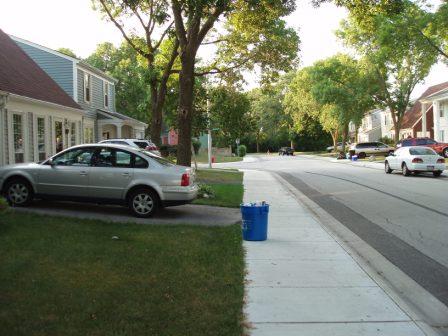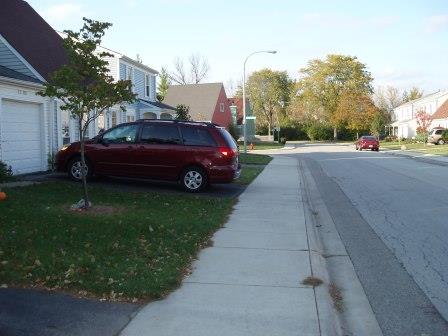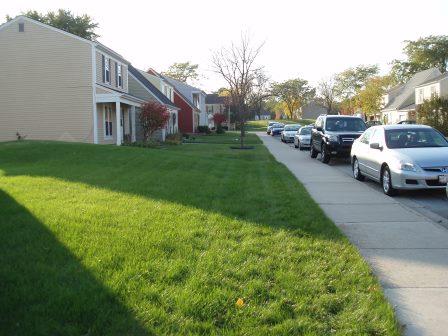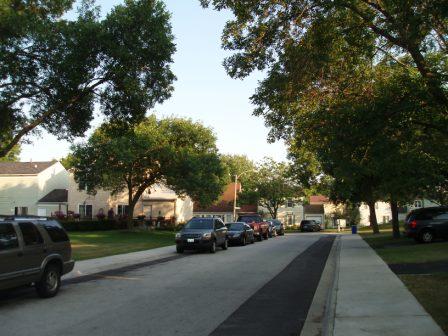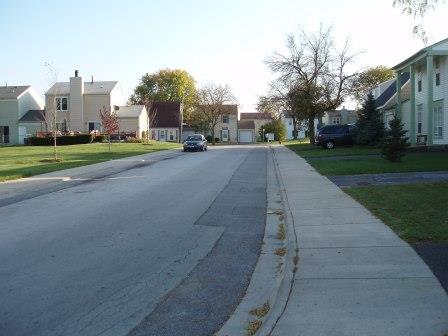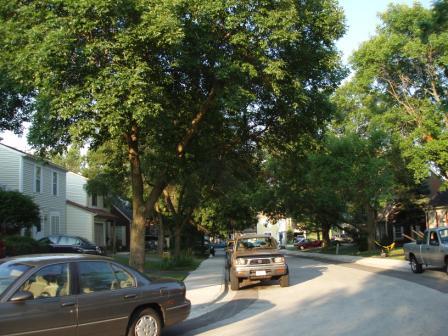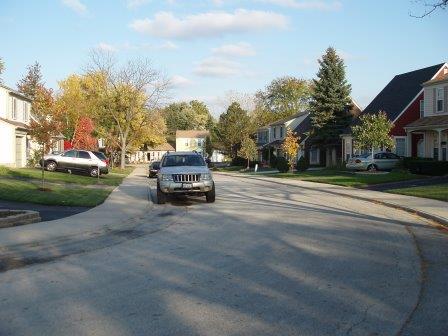by Carl Strang
The developers who built my subdivision, in their wisdom, decided to plant mostly green ashes along the streets. That brilliance has been answered in the form of an insect, the emerald ash borer. This little invasive ash-killer has done a number on my neighborhood. A series of before-and-after shots follows, going around the block route I follow when I do my standard survey of singing insects in the warm months.
Most of the tree loss happened over a brief period of time, the second half of summer last year. Ever the opportunist, I made predictions about the response of the three singing insect species common enough for statistical comparisons between this year and last. Greater angle-wings are tree-dwelling katydids, and so I expected their counts to drop. Carolina ground crickets mainly live beneath foundation shrub plantings, so I expected no significant change. Finally, striped ground crickets prefer sun-lit lawns to shade, so I expected their numbers to increase. I was correct on two of the three predictions.
The Carolina ground cricket median count in 2013 was 7, not significantly different from 2012’s median of 5 (Mann-Whitney U-test of the ranks of all the counts led to a z statistic of 2.05, p>0.01). The median count of striped ground crickets in 2013 was 20, that in 2012 was 11. The comparison of ranks produced a statistically significant z value of 3.89 (p<0.01). I was somewhat surprised at the lack of a demonstrable difference for greater angle-wings (z = 1.00, p>0.01). The 2013 median count was 3, less than the 2012 median of 5, but the difference was not as large as one might expect. There were enough surviving trees of other species to sustain a population of the katydids, and also the removal of the nearer trees made more distant angle-wings more audible.
